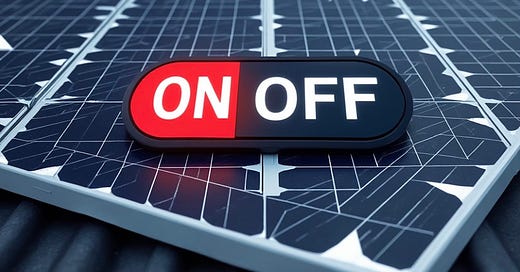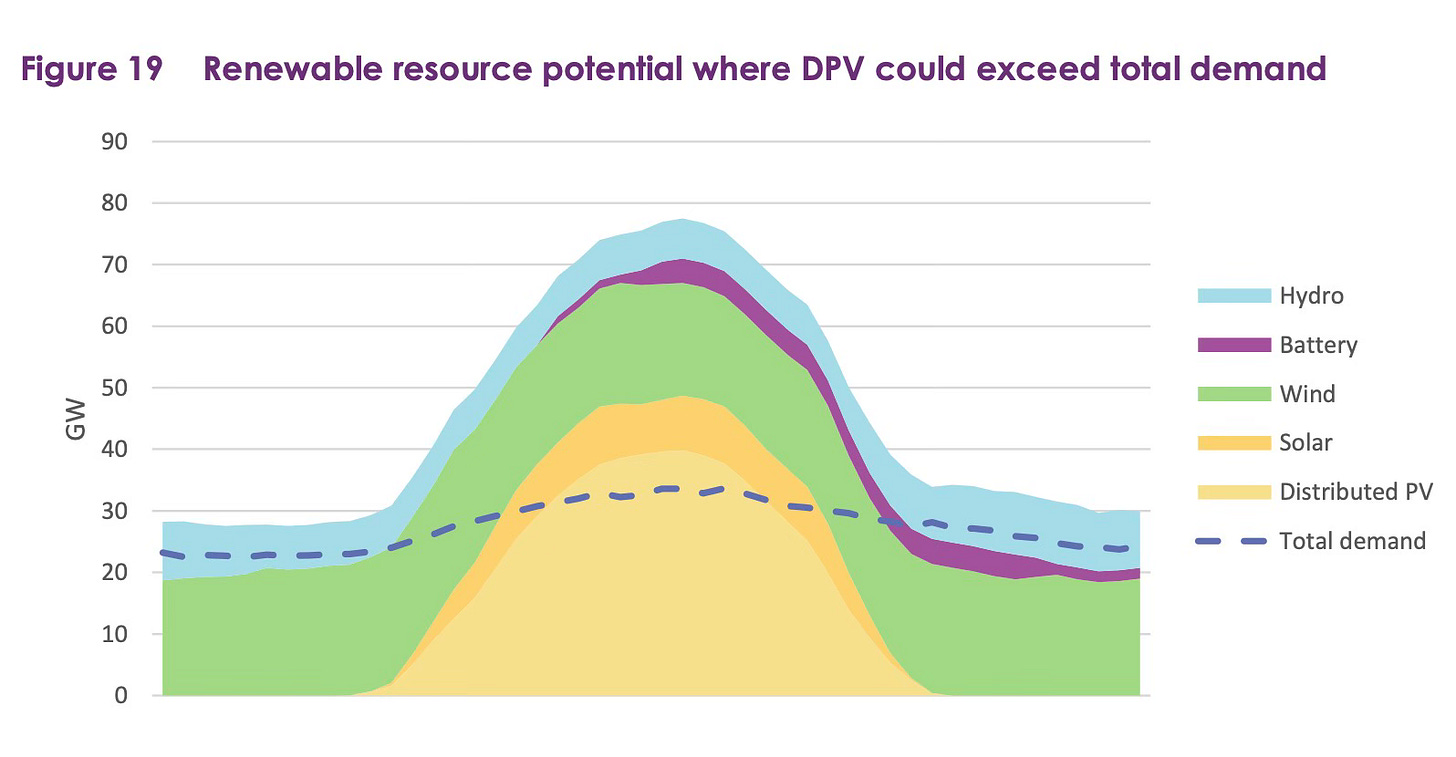If you want to grasp how a grid can be destroyed by ‘green’ energy, take a hard look at Australia where rooftop solar energy is overwhelming the system at the wrong times. Watts Up With That and Jo Nova provide great overviews.
This article from ABC News (Australia) also explains it very well and I offer a few excerpts below (emphasis added):
The body responsible for keeping the lights on in Australia's biggest electricity grids wants emergency powers to switch off or throttle rooftop solar in every state to help cope with the daily flood of output from millions of systems.
In a report released on Monday morning, the Australian Energy Market Operator said "emergency backstop" powers were urgently needed to ensure solar installations could be turned down — or off — in extreme circumstances…
Such powers already exist in some states such as South Australia, Western Australia, Victoria and parts of Queensland.
But AEMO said they needed to be extended to all states by next year as the amount of rooftop solar reached ever greater levels and the risks to the security of the grid became critical...
AEMO said the ever growing output from solar was posing an increasing threat to the safety and security of the grid because it was pushing out all other forms of generation that were needed to help keep the system stable.
And it warned that unless it had the power to reduce — or curtail — the amount of rooftop solar times, more drastic and damaging measures would need to be taken.
These could include increasing the voltage levels in parts of the poles-and-wires network to "deliberately" trip or curtail small-scale solar in some areas.
An even more dramatic step would be to "shed" or dump parts of the poles-and-wires network feeding big amounts of excess solar into the grid.
"If sufficient backstop capability is not available … the NEM may be operating insecure for extended periods," the agency wrote in the report.
"(It may) therefore be operating outside of the risk tolerances specified in the National Electricity Rules, where the loss of a single transmission or generation element may lead to reliance on emergency control schemes to prevent system collapse…”
“The ability to restore the system following a black system event may also be compromised at times of very high distributed PV (rooftop solar) generation."
...When the amount of rooftop solar in Australia was immaterial, it wasn't a problem.
The proportion of demand for power being met by solar was tiny, and conventional generators such as coal- and gas-fired plants carried on almost totally unaffected.
But as the amount of small-scale solar has grown to truly monumental levels, the dent it has put in demand for power from the grid has become equally large.
Rooftop solar is now such a dominant force in the system, at times, it is pushing the minimum level of demand for power from the grid to critically low levels…
"The minimum demand problem typically happens in the middle of the day on weekend days when you have a lot of solar output but maybe not a lot of demand," Dr Wonhas said."
"At that time, the electricity grid effectively becomes a little bit unstable.”
"It's a little like cycling on your bicycle when it's moving very slowly — the inertial forces of the bicycle become less and it's really very difficult to keep it straight.
"That's the same challenge of operating an energy system during those periods of time."
"You have to either increase the load (demand) during that time to make it more stable or you have to basically reduce the solar output or other output…
"Now that rooftop PV is supplying more than half the grid at times, this requires introduction of a new 'emergency backstop' mechanism.”
"[This will] allow rooftop PV systems to be curtailed or turned off briefly if necessary in rare emergency conditions, similar to the capabilities normally required of any large scale generator."
The absurdity of telling consumers they need to use more electricity — after decades of lectures about the need for energy conservation and efficiency — is nothing less than stunning. After all, solar is only going to cover the daytime unless the storage fantasy comes true in a meaningful way and even then one can only store modest amounts compared to the excesses being created. That means more electricity use will necessarily mean more fossil fuel use, but that wasn’t the idea was it?
Therefore, the only practical solution is to shut down that which you’ve been subsidizing everyone to install to, you know, save money, save the planet, and all that. Meanwhile, they see their electric bill going up, not down, anyway, because the coal plant is now operating so inefficiently that any costs saved with solar are more than offset by increased coal generation costs, and the risk of blackouts has been multiplied as well. Imagine the reaction of homeowners and businesses who bought into your scheme. What are you going to tell them? “Sorry, we erred” isn’t likely to cut it.
The AEMO, which knew this day would come, just as California does, is trying to soften the blow with big or soft words and convoluted language intended to distract from the harsh reality of just how incompetent large institutions can be. That much is on display in its report on the approaching storm. “We need the ability to shut you down” becomes “reduce the amount of generation that needs to remain online to provide essential services,” for instance. Then, there is this:
To manage high risk, low demand periods that may occur (for example under some transmission outage conditions), an “emergency backstop” capability is required to allow emergency curtailment of DPV [distributed photovoltaic or solar] when needed to maintain system security at times of oversupply when other options insufficient.
If there are insufficient emergency backstop capabilities, alternative and even higher impact interventions may be needed, such as:
Distribution voltage management – in some regions, it is possible to increase distribution voltages to the level required to deliberately trip/curtail DPV. This is a valuable backup mechanism to resecure the system if needed in rare emergency events but should not be used on a regular basis. It may require jurisdictional support to operationalise.
Shedding of reverse-flowing feeders – the only mechanism remaining to increase operational demand to the levels required would be to shed entire feeders that are in reverse flows (for example, 11 kilovolts [kV] or 22 kV circuits). This would also shed all consumer load on the feeder and have a very high impact on homes and businesses.
Despite all the ‘don’t you worry’ stuff thrown around, it's clear where much of Australia already is; at what Rafe Champion calls the tipping point and that's not a good thing. The following two charts illustrate the problem:
“Infeasible operating state” the chart says. Yeah, that’s where Australia is right now or will be soon. What a mess! California is nearly there as well and New York certainly aims to follow, of course, because that’s what crazy states do!
#Australia #RooftopSolar #Solar #ElectricalGrid #AEMO #California #NewYork







